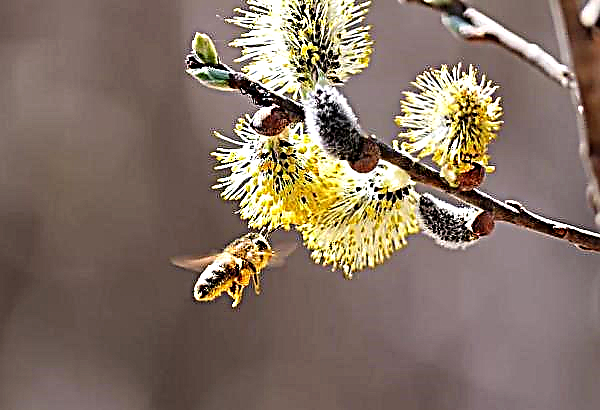Japanese culture is very closely intertwined with nature. This connection gave impetus to create a special direction in landscape design. Contemplation of the beautiful, respect for nature, the symbolism of all elements, detail and painstaking work in the planning are the fundamental features of the Japanese garden.
Japanese style story
Like most areas, the Japanese style in landscape design has deep roots. For the first time the garden was mentioned in the letters of the VIII century BC. e. But initially, the hieroglyph “Niva” meant a spacious area without any fence. A little later, he began to denote the word "garden", decorated with stone paths and various architectural elements.
The style in question has a close relationship with painting. Since the construction of Buddhist monasteries in the era of samurai, the main characteristics of the Japanese garden have changed significantly: the colorful and colorful view of the landscape has grown into a calm, restrained and “dry” landscape. Many experts on orientalism argue that the Japanese style in creating the landscape arose as a result of the merger of the two religions: Confucianism and Shinto. Both directions preach the closeness of man and nature.Did you know? The first Japanese-style gardens outside their homeland appeared in America in 1894 and in Holland in 1903.
Europeans became famous only about 150 years ago. This is due to the fact that the Japanese for a long time tried to maintain their philosophy within the country: prolonged political isolation did not allow foreigners to get closer to their culture. At the end of the XIX century, when Japan provided an opportunity for European citizens to get acquainted with oriental customs, in many countries there was a “boom” in everything Japanese.
Varieties of Japanese style
This direction in landscape design has its own classification.
The main varieties of the Japanese garden are:
- Tsubo - A small area of a house or an open-air plot where access to a large amount of light is mandatory.
- Rock garden - A platform decorated with vegetation and various decorative elements in the style of minimalism.
- Tea garden - characterized by a symbiosis of two varieties of green spaces with a variety of landscape design elements. In the original in Japan, this type implies the creation of a wabi, the so-called pavilion, where a tea ceremony is held.
Tsubo
This kind of Japanese style of landscape design, the name of which stands for a small area, originated in the era of urban architecture in the early Middle Ages. Mini-gardens are placed both in small areas of the summer cottage, and inside the building.
 If there is not enough light, then you can additionally install lamps, lights, as well as unusual mirrors.
If there is not enough light, then you can additionally install lamps, lights, as well as unusual mirrors.
The philosophy in creating tsubo is to dilute the urban style with light and nature. When placing vegetation take into account the cardinal points. For example, photophilous crops are grown in the south, and ferns and moss are planted in the north. This area is fenced with a large number of stones. The central part includes a composition of two or three plant species.
Many owners of country houses choose this method of creating a tsubo style:
- installation of a tsukubai lantern;
- laying out stone paths of tobisi;
- harmonious arrangement of a small number of plants.

Rock garden
This kind of landscape design is considered not just a variant of the Japanese style, but a whole philosophy of oriental culture.
The traditional creation of the garden is based on the following placement of boulders:Important! Correct placement of the main boulder — this is the main goal when creating a rock garden. This item — the center of all landscape design. Side stones are its natural setting, and the overall composition should symbolize either mountain ranges or islands.
- Horai - the central stone in the pond, symbolizing the distant peak.
- Sumi is a composition of 3 bouldersthat are placed in a pond in an elevated area.
- Three jewels - a way of arranging all the elements of landscape design according to Buddhist traditions.
- Crane islands and turtles are characterized by fabulous elements.
They choose stones with great responsibility, since here it is not the shape and size of the rock that is important, but the feeling of harmony of the created composition. If the boulders are covered with moss or lichen, this will add a special appeal and naturalness to the landscape design. In addition, such "green" elements, according to the philosophy of the Japanese, bring harmony and peace to the house.
When making such a garden, you must follow certain rules:
- Do not set stones in ascending or descending lines.
- It is not permissible to use boulders of different territorial origin in one composition (river, sea, mountain).
Did you know? The first rules on garden art are found in the treatise "Senzai Hisho", written in the XI century BC.
For the stability of the composition, stones must be dug up, and to hide errors, miniature bushes or grassy crops can be planted around them. To create maximum harmony, boulders should be characterized by the naturalness of shades and shapes.
Tea garden
This kind of Japanese style in landscape design has become very popular since the 19th century in Europe. The tea ceremony is an integral part of eastern culture. It creates a calm and peaceful atmosphere. The site should have a small area that mimics the mountainous terrain.

In the depths is the pavilion for the tea ceremony. It may resemble a modest hut or gazebo. The decor is quite restrained and natural. The placement of plant and stone elements should look natural. Lighting is dim. Lanterns and lamps are important semantic components of the tea garden. They are also designed to decorate and illuminate the area.
Usually in the tea gardens put one stone lantern. You can choose these popular options:
- tatigatu having good lighting;
- ikekomigatu, which is characterized by the ability to direct light down.
 Also in Japanese gardens often set flat bridges. A popular element is a decorative element called yatsuhashi. It consists of stones and boards and is laid out in a zigzag pattern.
Also in Japanese gardens often set flat bridges. A popular element is a decorative element called yatsuhashi. It consists of stones and boards and is laid out in a zigzag pattern.
Rules for registration
Europeans, applying the Japanese style in their summer cottages, try to recreate only the atmosphere of oriental culture, completely forgetting that the construction of such gardens is a real art and philosophy.
Important! Some plants must be planted, taking into account the cardinal points. For example, maple is placed in the southwest, since this tree, according to the philosophy of the Japanese, should be lit as long as possible, and the oak should be planted in the center of the site.
It is necessary to adhere to the theme of Japanese style. For example, it can be a garden of stones, water, trees or seasons. The main thematic elements should be in the center.
There are three basic rules that you must follow when creating a Japanese style:
- The combination of water and stones as symbols of masculine (yang) and feminine (yin) principles.
- The natural appearance of vegetation and other elements of the garden.
- Asymmetry of the landscape with emphasis on the main details of the composition.
Japanese gardens are characterized by restraint, a harmonious combination of colors, shapes and decoration elements. When creating several compositions, it is necessary to make smooth connecting transitions between them using herbs or various accessories.
The principle of creating a Japanese garden lies in four characteristics:
- the symbolism of every detail;
- asymmetry and uniqueness of forms and proportions;
- naturalness and simplicity;
- harmonious unity of each element with nature.

Main elements
The Japanese style in landscape design is characterized by basic objects. These items include:
- Water Is a symbol of life, prosperity and eternal energy. She gives the garden a special mood and rhythm. If the territory allows, it is recommended to create large reservoirs, streams or waterfalls. They should look natural.
- Stones Is a symbol of eternity, power and constancy. Such elements determine the structure of the Japanese garden. Popular options include using stones in walkways, bridges, or as highlighting elements that frame a pond. It is very important to place the boulders correctly. It is recommended to do this randomly, such an asymmetry will look more harmoniously in the composition.
- Vegetation - An important feature of any landscape design in the Japanese style. For decoration, low trees, shrubs and grasses are suitable. Pine, plum, eastern maple are popular. Blooming sakura looks very nice on the plot. This tree is a symbol of the beauty and transience of being. Often, Japanese quince is planted on the site, symbolizing fertility and long life. The shape of the plant is also of particular importance. According to Japanese beliefs, the hemispherical shape is a symbol of the sky. You can also recreate symbolic paired compositions from old stumps and young ferns or green flowering bushes.
- Small architectural elements - These artificially created objects are able to give a magical atmosphere to the garden. Such architectural forms include bridges (stone or wooden), lanterns (as a symbol of kindness), benches, garden screens and more. All these elements are made of natural materials, the only way they harmoniously fit into the main style.

Plant selection
Both trees and bushes, and perennials and flowers are suitable for landscaping. It is desirable that the plants are not too overall.
Gardening of the Japanese garden is carried out using these types of plants:
- Conifers: blue spruce, pine, western thuja, Cossack juniper.
- Deciduous trees: willow, maple, plum, chestnut, linden.
- Deciduous bushes: barberry, weigela, rhododendrons, spirea.
- Herb crops: asters, irises, bows, ferns, chrysanthemums.
- Groundcover: periwinkle small, cuckoo flax, hoofed.
- Creepers: girl's grapes, Schisandra chinensis, honeysuckle honeysuckle.

Creating a Japanese garden is a very responsible occupation, which must be taken carefully. It is necessary to design and combine all the elements of compositions according to the basic rules of oriental culture, only then the site will be filled with a special atmosphere of peace and unity with nature.












